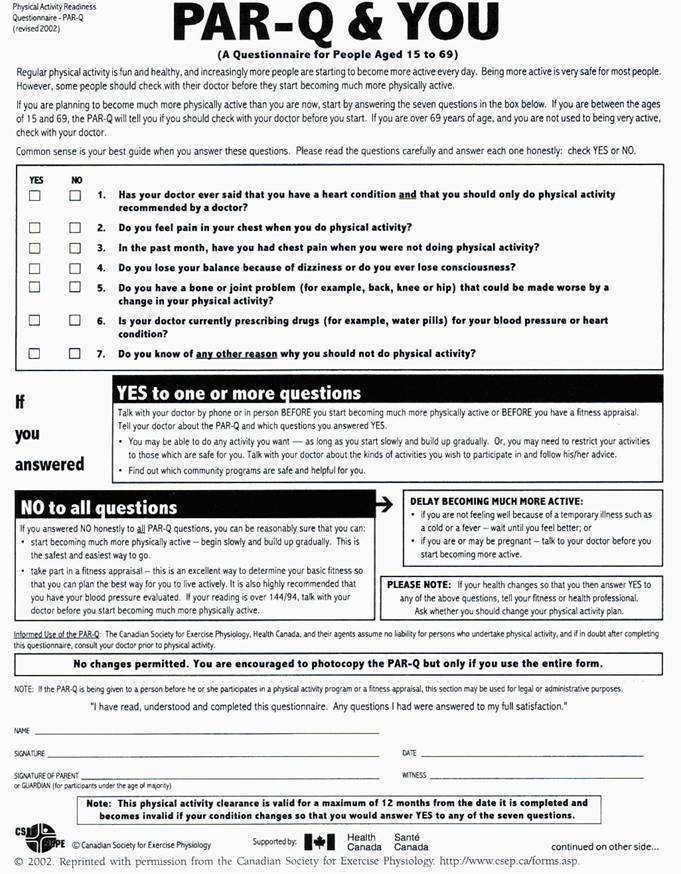Before you start a new activity program, even one as seemingly simple as walking, it’s important to determine not only how healthy and fit you are in general but also how fit you are in the specific activity you want to begin. For example, if you are a very fit cyclist, you might not have the specific muscle strength or endurance for long or speedy walking workouts. On the other hand, even if you have been inactive for a while, you may have developed leg strength through everyday tasks such as gardening or dog walking, and you might not have to start with short and easy introductor y workouts.
Remember, too, that health y and fit don’t always go hand in hand. You may be healthy in the medical sense (meaning you are free of clinical disease) but lack enough strength, flexibility, or endurance for physical activity. On the other hand, you might be strong from physical activity but show signs of disease because of genetics or poor lifestyle choices. Just because you are active doesn’t mean you can eat all the junk you want or treat your body poorly. It can still talk back to you, and per- haps in ways you’d rather not hear.
No matter what your health and fitness levels or your current level of activity, it’s important to reassess them prior to jumping into something new. Remember, the key to accurate results of any assessment is to be straightforward and honest in your answers. You’ll only cheat yourself and your potential if you fib. In this case, a less-than-honest answer could also lead to injury rather than to maximum improvement and peak enjoyment of walking. And enjoyment is what we’re after.
Although walking is a virtually injury-free sport, when you increase your activity level or try a different technique or new workout regimen, you suddenly put additional stress on a new part of your body or on previously unused muscles and tissues. While walking, it’s still possible to aggravate an old injury you hadn’t cared for properly or discover a genetic deficiency or muscle imbalance that was undetectable in your previous routine or because you were inactive.
As with any activity, be smart, ease into each new level, and listen to your body. This article will help you avoid the pitfalls and show you how to pace yourself as you progress. Be smart and be safe. That’s the bottom line.
PAR-Q Test
The PAR-Q basic health screening, which stands for Physical Activity Readiness Questionnaire, is designed to set off alarm bells for high-risk conditions that need a doctor’s consultation. It is only a general review. But don’t blow it off as unnecessary. Instead, take a few moments to read and complete it (see figure 1.1).
 Figure 1.1 The PAR-Q Test
Figure 1.1 The PAR-Q Test
See also:
Walking Health – Fitness Assessment
1-Mile Walking Test
Post Views: 245